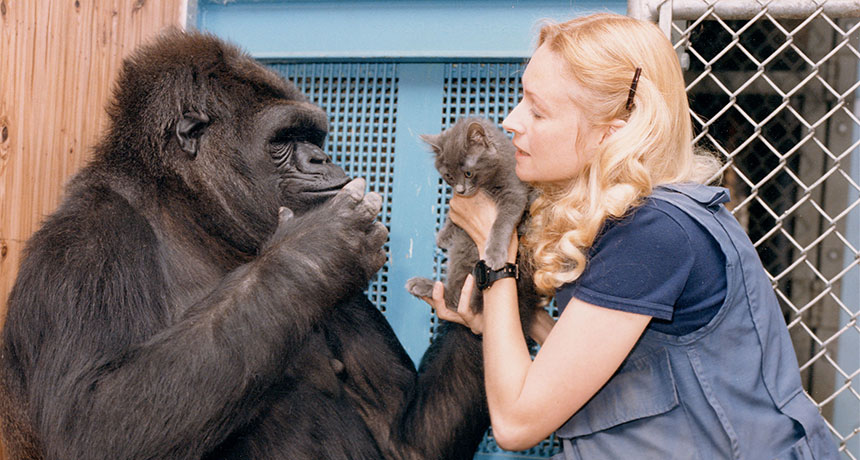Documentary looks for meaning in Koko the gorilla’s life

For the last four decades, Koko, the world’s most famous gorilla, has lived in a trailer in Silicon Valley, the subject of the longest-running project on ape sign language. With a reported vocabulary of hundreds of signs, Koko has appeared to express feelings almost anyone can relate to — a love of kittens, a desire to be a mother.
A new PBS documentary argues that Koko’s remarkable life “challenges what it is that makes humans unique.” The problem, though, is that the film never really makes clear what “it” is. Rather than diving into the question of ape language and dissecting Koko’s abilities, Koko — The Gorilla Who Talks focuses more on the relationship between Koko and researcher Penny Patterson.
Patterson began working with Koko in 1972 while a Ph.D. student at Stanford University, with the aim of conducting the first sign language experiment with a gorilla. Koko was an infant, living at the San Francisco Zoo. By 1977, Patterson had negotiated to take ownership of Koko.
After completing her Ph.D., Patterson drifted away from mainstream science, and her relationship with Koko seems to have morphed from researcher and study subject to mother and child. Patterson appears deeply attached to Koko, and she seems to genuinely believe Koko is communicating her thoughts and feelings.
Skeptics interpret Koko’s behavior differently. Columbia University psychologist Herbert Terrace, who appears in the film, has conducted his own research on primate communication and intelligence. He suggests Koko is largely mimicking Patterson to receive rewards. Patterson, he argues, has failed to produce any data that prove otherwise.
The reality is probably somewhere in between these extremes. It’s difficult for anyone to really know what’s going on inside an animal’s head, but the idea of conversing with animals is deeply appealing. In the end, the film may reveal more about human behavior — our infinite capacity for empathy (SN Online: 6/29/16) and our yearning to bond with others — than it does about the capabilities of Koko or any of our other ape cousins.